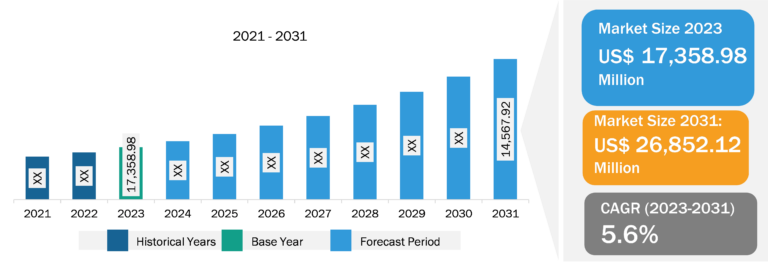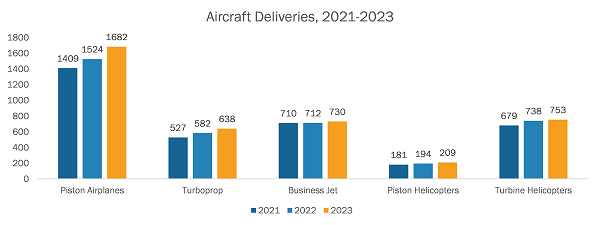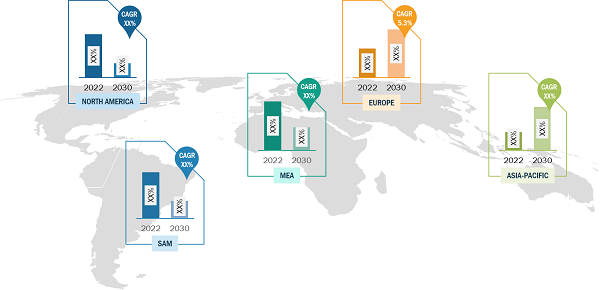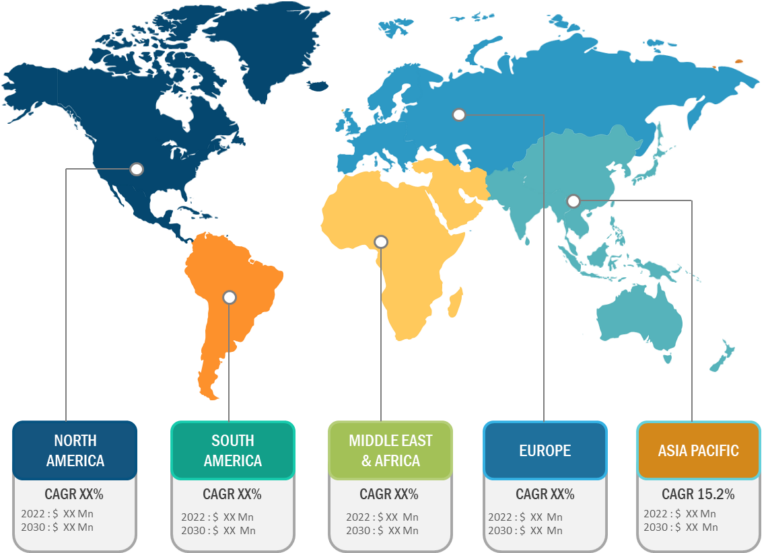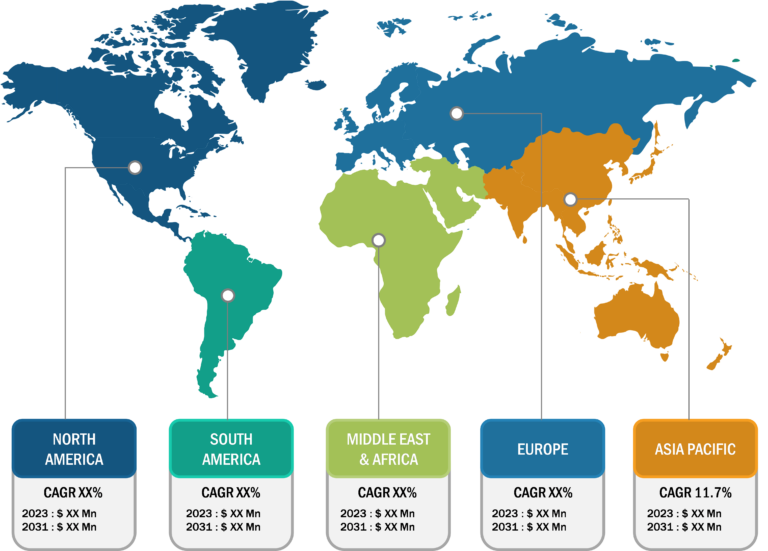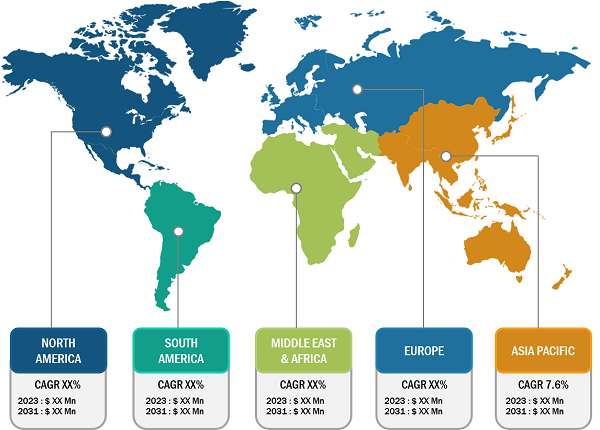
Airport Runway FOD Detection Systems Market
The adoption of advanced technologies such as the Internet of Things (IoT), cloud, blockchain, and artificial intelligence (AI) by the aerospace & defense industry is projected to increase in the coming years. The implementation of high-end technologies supports organizations to modernize the manufacturing of components, streamline operational processes, ensure improved safety of the aircraft and passengers, and process large volumes of data. For instance, ArgosAI offers A-FOD that confers features such as enhanced real-time detection of foreign object debris (FOD), analysis tools for managing runways, and alarm generation systems; it is an artificial intelligence-based automated airport runway FOD detection system. Thus, the rising adoption of artificial intelligence-driven FOD detection systems is expected to bring new trends to the airport runway FOD detection systems market growth in the coming years.
The airport runway FOD detection systems market ecosystem is diverse and involves various stakeholders such as component providers, FOD detection system manufacturers, service providers, and end users. The airport runway FOD detection systems consist of the core hardware interfaces and implementation of software required for the complete process of debris detection and removal. High-performance magnetic sensors and high-definition cameras, vacuums, antennas, magnet bars, sweepers, and systems related to detection feasibility, communication, system specifications, and object classification to accumulate debris from component suppliers play a crucial role in manufacturing airport runway FOD detection systems. Silicon, silicon carbide, polysilicon, silicon oxide, nickel, and piezoelectric thin films are used to manufacture essential parts such as cameras and sensors. The role of component providers in the ecosystem of the airport runway FOD detection systems market is crucial in ensuring the seamless functioning and reliability of FOD systems.

Airport Runway FOD Detection Systems Market Share: End Use Overview
Based on end use, the airport runway FOD detection systems market is bifurcated into military airports and civil airports. The commercial airport segment held a larger airport runway FOD detection systems market share in 2023. With the growing focus on airport safety measures, the implementation of airport runway FOD detection systems is increasing. Civil airports primarily have a higher volume of air traffic, which makes foreign object debris detection more crucial for maintaining efficient services and operational safety.
The civil airport basically caters to business jets, piston engine aircraft, helicopters, and trainer aircraft for operations such as take-off, landing, MRO services, operational checks, and private charter operations. Several countries, such as the US, China, Russia, and the UK, have a huge number of civil airports. The airport runway FOD detection systems market for the civil airport segment is driven by airport expansion projects across their respective regions. Civil airports cater to passenger airlines and provide services for commercial aircraft such as narrow-body aircraft, wide-body aircraft, and regional jets. The increasing air passenger traffic is one of the major factors boosting the procurement and deployment of various commercial aircraft models by multiple airlines operating across different regions. Moreover, introducing low-cost airlines is another major factor raising the demand for air travel to the next level across emerging countries, such as India, Malaysia, Thailand, and Nepal.
Governments of different countries have been taking initiatives to construct new airports to cater to the rising number of aircraft fleets and passengers. For instance, in 2022, the Government of India stated its plans to build 220 commercial airports by the end of 2025. Moreover, in 2018, the Civil Aviation Administration of China (CAAC) announced its plans to construct 216 new airports by the end of 2035, which will increase the total airport count to 450 by 2035 (234 airports currently in 2023). Such developments have been contributing to the growth of the airport runway FOD detection systems market size. The growing number of air travel passengers and increasing focus on airport operational efficiency primarily have a positive impact on the implementation of airport runway FOD detection systems across civil airports worldwide. For instance, Singapore Changi Airport has been utilizing a Singapore-designed intelligent and completely automatic foreign object debris (FOD) detection system, known as iFerret, at its Runways 1 and 2 since 2009 to safeguard runway operations. In addition, in June 2019, the Beijing Daxing International Airport (BDIA) chose the FOD detection solution of XSight Systems for deploying it on their East and North runways. Furthermore, the company has been awarded another project of deploying a FOD detection solution at the Beijing Capital International Airport in its East Runway. Thus, the construction of new airports/runways and deployment of FOD detection systems at airports play a major role in boosting the market growth.
The scope of the airport runway FOD detection systems market report focuses on North America (US, Canada, and Mexico), Europe (Spain, UK, Germany, France, Italy, and Rest of Europe), Asia Pacific (South Korea, China, India, Japan, Australia, and Rest of Asia Pacific), the Middle East & Africa (South Africa, Saudi Arabia, UAE, and Rest of Middle East & Africa), and South & Central America (Brazil, Argentina, and Rest of South & Central America). North America held the largest airport runway FOD detection systems market share in 2023 and is projected to maintain its dominance during the forecast period.
The aviation sector in Asia Pacific is undergoing robust expansion and development initiatives, propelled by the region’s surging economic growth and increasing air travel demands. Key airports, including Singapore Changi, Beijing Capital International, and Incheon International, are pivotal hubs spearheading modernization projects. The focus extends beyond major hubs, with countries such as Indonesia and Thailand investing in regional airports to improve connectivity. As Asia Pacific solidifies its position as a global aviation hub, these collective efforts ensure a resilient and advanced airport runways FOD detection system that meets the evolving needs of aircraft and passenger safety. In 2023, out of 425 airports worldwide, 155 airport and airport infrastructure development projects with an investment of US$ 209 billion in Asia Pacific are under development. China has 240 airports, which is the highest number of airports in the region, and the country plans to increase the figure to 450 by 2035. Such initiatives are driving the demand for various airport technologies, including runway FOD detection systems. In addition to commercial/civilian airports, the country also emphasizes its military airports, which boost the use and installation of technologically improved systems. Due to the significantly higher aircraft movements at military airports in China, the need for FOD detection systems on the runway has become crucial. This boosts the procurement of these systems in the region, which contributes to the growth of the airport runway FOD detection systems market size.
One of the largest airport development projects in Asia Pacific is Long Thanh International Airport in Vietnam, which has an investment of US$ 14.5 billion and is expected to be completed by 2025. In addition, the expansion of Terminal 5 at Changi Airport Singapore is a US$ 10 billion project and is expected to be completed by 2030. Such investment toward the expansion and development of the airport is expected to fuel the airport runway FOD detection systems market growth during the forecast period.
Airport Runway FOD Detection Systems Market: Competitive Landscape and Key Developments
ArgosAI Teknoloji A.Ş.; Moog Inc.; Navtech Radar; Pavemetrics; Plextek Services Limited; Rheinmetall AG; QinetiQ Group Plc; Thales SA; Xsight Systems Ltd.; Trex Aviation Systems; Varec, Inc.; Smiths Detection Group Ltd. (Smiths Group plc); Infologic Pte Ltd.; Skylarklabs, Inc.; and Hitachi Ltd are among the key players covered in the airport runway FOD detection systems market report. Companies in the market mainly focus on product and service enhancements by integrating advanced features and technologies into their offerings.

